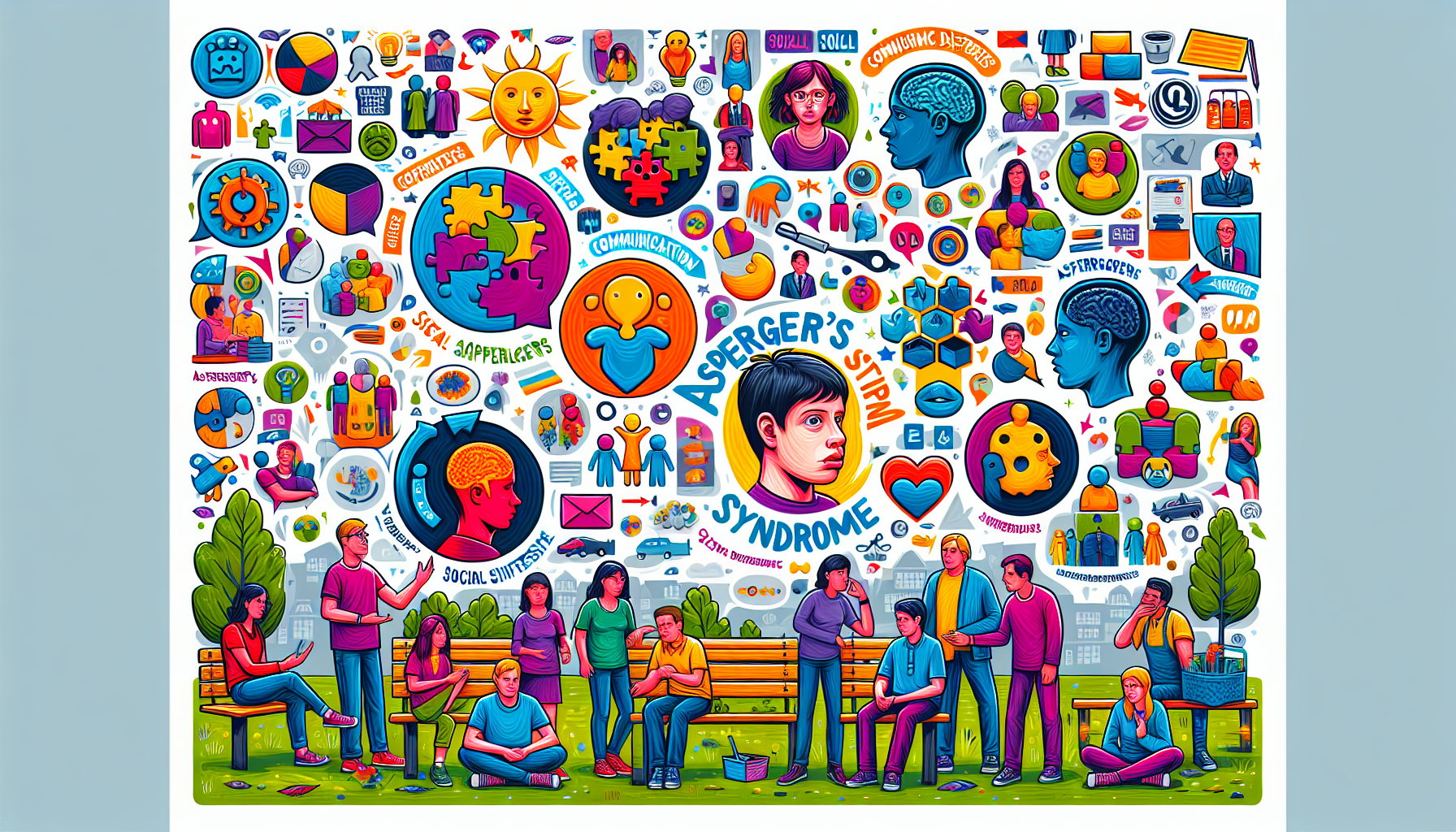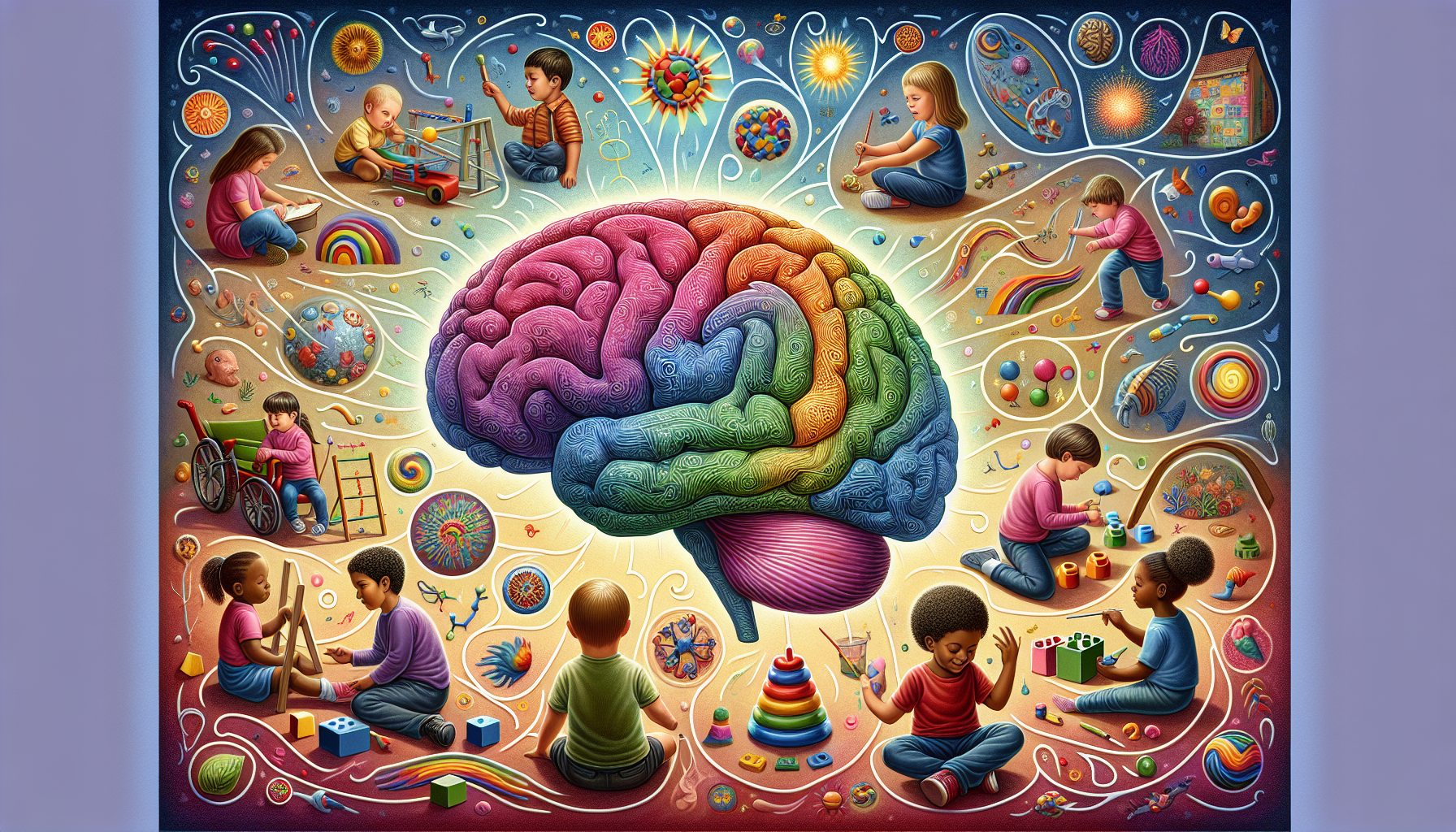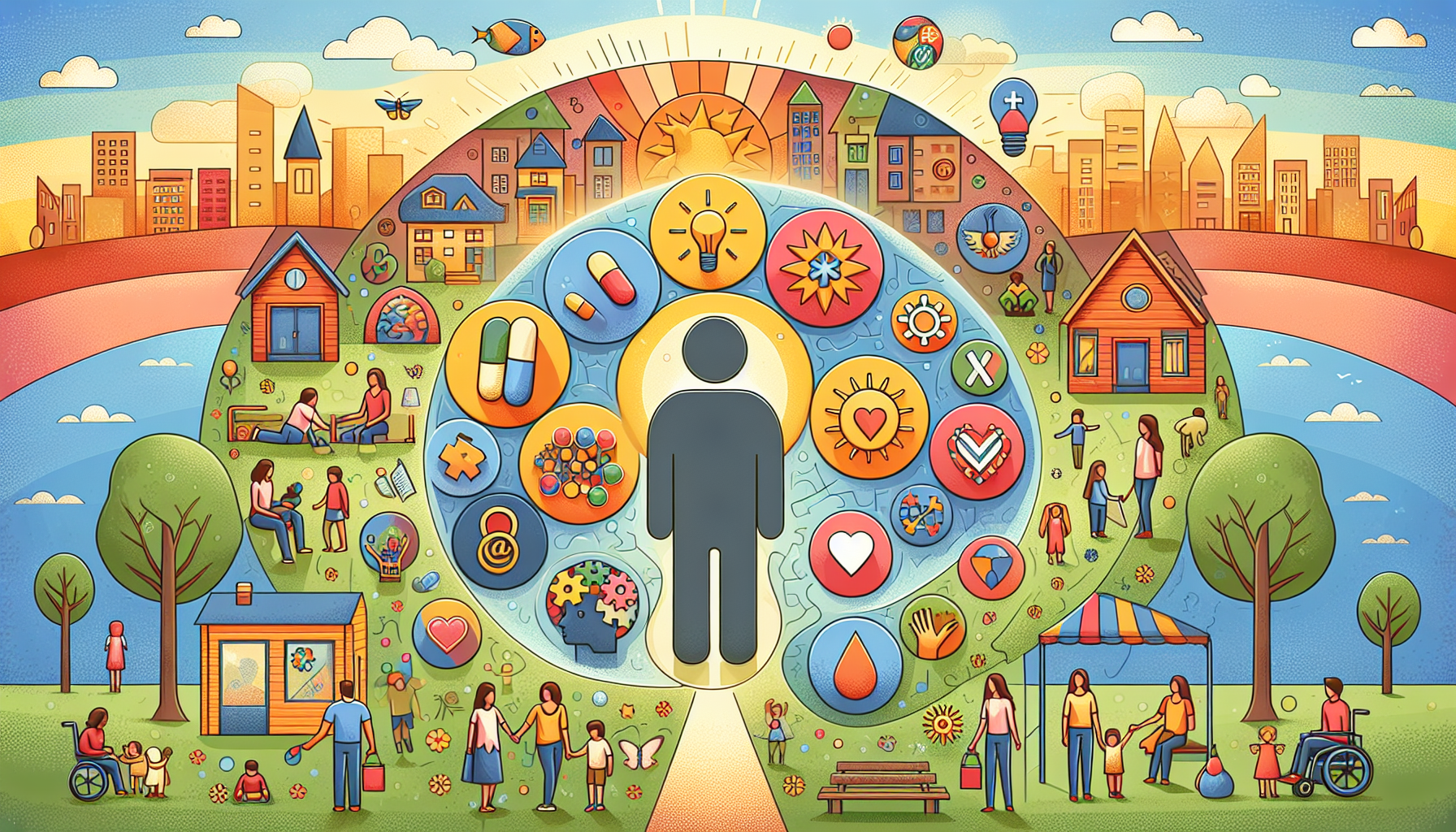How does Asperger’s Syndrome differ from Autism Spectrum and Aspergers Disorder (ASD)? This article highlights the unique characteristics, diagnostic criteria, and reclassification of Asperger’s within the autism spectrum and Aspergers. Discover how these conditions impact communication, social interactions, and behaviors.
Key Takeaways
- Autism Spectrum Disorder (ASD) is a complex and varied condition, requiring personalized approaches for support, particularly after the 2013 reclassification of Asperger’s Syndrome within the broader ASD category.
- Individuals with Asperger’s Syndrome typically exhibit high-functioning characteristics, including no significant language delays, but face substantial challenges in social interaction and communication, leading to potential isolation and misunderstandings.
- Management of ASD and Asperger’s involves a range of treatments including behavioral therapies, medications for comorbid conditions, and supportive therapies, all aimed at enhancing daily functioning and improving quality of life.
Overview of Autism Spectrum Disorder (ASD)

Autism Spectrum Disorder (ASD) is a complex neurological and developmental disorders that significantly influences how an individual communicates, behaves, and interacts socially. The term ‘spectrum’ is used because the symptoms and severity can vary widely among individuals, making each case unique. Autism spectrum disorders encompass a range of conditions that share similar characteristics.
ASD includes various conditions that share core challenges in social interaction, communication, and repetitive behaviors. The spectrum nature emphasizes the need for personalized approaches to understand and support autistic individuals.
Defining Asperger's Syndrome

Asperger’s Syndrome, once considered a distinct condition, was first introduced in the Diagnostic and Statistical Manual of Mental Disorders (DSM) in 1994. It was recognized as a milder form of autism with no significant language delays. However, in 2013, the DSM-5 merged Asperger’s into the broader category of Autism Spectrum Disorder (ASD), aligning it under the same diagnostic umbrella.
Despite this reclassification, many previously diagnosed individuals continue to identify with the term Asperger’s. Public perception often views it as a separate entity, which can contribute to stigma and complicate the lives of those affected.
Asperger syndrome is characterized by difficulties in social interaction, nonverbal communication, and restricted, repetitive behaviors. Unlike other forms of autism, individuals with Asperger syndrome typically have relatively unimpaired language skills and normal intelligence. These traits often lead to the label of ‘high functioning autism,’ though the challenges they face are no less significant.
Symptoms and Behavioral Traits
Symptoms and behaviors in both ASD and Asperger’s can vary widely, but common threads tie them together. Individuals with ASD often face challenges in communication, social interactions, and exhibit repetitive behaviors. Those with Asperger’s also display difficulties in interpreting social cues and may have focused, repetitive interests.
These symptoms can be broadly categorized into social interaction challenges, communication differences, and repetitive behaviors with special interests. Each area contributes to the unique experiences of an autistic person on the autism spectrum.
Social Interaction Challenges
Social interaction can be a significant hurdle for individuals with ASD and Asperger’s Syndrome. Challenges often manifest as difficulties in forming and maintaining friendships, interpreting social cues, and engaging in conversations. For those with Asperger’s, these deficits can lead to social anxiety and isolation, complicating social navigation.
Many with Asperger’s struggle to understand body language and facial expressions, crucial for successful social interactions. These difficulties can create barriers to building meaningful relationships, often leading to loneliness and frustration, as noted in the work of hans asperger.
Communication Differences
Communication differences are a hallmark of Asperger’s Syndrome. Individuals may exhibit verbosity, literal language interpretations, and idiosyncratic speech patterns. This can make conversations challenging, as they may not grasp nuances like humor, irony, or sarcasm.
Children with Asperger’s can engage in conversation but often miss subtleties of social communication. Their speech tends to be more formal and detailed, sometimes leading to abrupt transitions and difficulty staying on topic, complicating social interactions and understanding.
Repetitive Behaviors and Special Interests
Repetitive behaviors and special interests are common in both ASD and Asperger’s. These can include strict adherence to routines, repetitive movements, and a deep focus on narrow topics. Individuals with Asperger’s often develop intense interests in specific subjects, collecting detailed information without broader context.
These repetitive behaviors and special interests can provide comfort and predictability but may also interfere with daily functioning and social interactions. Supporting these behaviors helps individuals on the spectrum navigate their world.
Cognitive and Developmental Aspects

Cognitive and developmental profiles in individuals with Asperger’s Syndrome are diverse. Generally, they possess average to above-average intelligence without significant language delays. However, their cognitive abilities can vary greatly, reflecting a heterogeneous profile.
Despite high verbal intelligence, individuals with Asperger’s often struggle with executive functions and other cognitive tasks. Many exhibit exceptional skills in specific areas like memorization and problem-solving, which can be both a strength and a challenge.
Parents may notice developmental differences as early as 30 months. Additionally, atypical sensory perceptions are common, leading to heightened anxiety and sensory overload. These aspects highlight the need for tailored support and interventions.
Diagnosis and Screening

Diagnosing Autism Spectrum Disorder (ASD) and Asperger’s Syndrome involves detailed observation and assessment, including an asd diagnosis. The DSM-5 outlines criteria focusing on communication deficits and restricted behaviors. Since 2013, Asperger’s has been classified under the broader ASD category.
Identifying signs of Asperger’s can begin as early as 30 months, though a formal diagnosis may come later. Early diagnosis is crucial for effective intervention and support, ensuring better outcomes.
Early Signs and Parental Observations
Parents often first notice developmental differences in their children. Symptoms of autism typically manifest within the first two years, making early intervention critical. By around 30 months, parents may observe behaviors suggesting Asperger’s, such as lack of eye contact and difficulty responding to social cues.
Diagnosis relies heavily on observations from professionals and detailed developmental descriptions from parents. Early support and intervention are beneficial in managing ASD, highlighting the importance of timely diagnosis.
Differential Diagnosis
Differential diagnosis for ASD and Asperger’s can be challenging, particularly in adults. The diagnostic criteria outlined in the DSM-5 primarily target children, complicating assessments in older individuals. Accurate diagnosis requires a thorough clinical examination and detailed medical history to distinguish Asperger’s from other mental disorders.
This process is essential to ensure that individuals receive appropriate support and interventions tailored to their needs. The reclassification of Asperger’s under ASD underscores the importance of a nuanced approach to diagnosis.
Management and Treatment Options

Management and treatment options for ASD and Asperger’s are diverse, tailored to individual needs based on multidisciplinary assessments. These conditions are not diseases needing a cure but require supportive interventions to enhance daily functioning.
Options range from behavioral therapies to medications and supportive therapies. Each approach aims to address specific challenges and improve the quality of life for individuals on the autism spectrum.
Behavioral Therapies
Behavioral therapies play a crucial role in managing ASD and Asperger’s. Applied Behavior Analysis (ABA) is commonly used to promote helpful behaviors in autistic children. Early intervention with ABA can significantly improve social skills and reduce repetitive behaviors, supporting better integration into daily activities.
Occupational therapy and social skills training are also vital components of behavioral therapy. These interventions help individuals develop practical skills for managing symptoms and enhancing overall well-being.
Medications and Comorbidities
Medications are often used to manage comorbid conditions like anxiety and depression in individuals with ASD and Asperger’s. However, side effects can be more common, and individuals with these conditions are frequently excluded from drug effectiveness studies.
While medications can help alleviate some symptoms, they are not a cure. A balanced approach, combining medication with other therapies, is typically the most effective strategy for managing these complex disorders.
Supportive Therapies
Supportive therapies, such as occupational therapy and assistive technologies, play a crucial role in helping individuals with ASD and Asperger’s manage daily challenges. Communication boards and software on tablets can aid in expressing thoughts and needs.
Cognitive Behavioral Therapy (CBT) is another supportive therapy that has shown mild benefits in managing symptoms. While not a cure, these therapies enhance quality of life and provide practical tools for individuals on the spectrum to navigate their world more effectively.
Prognosis and Long-Term Outcomes
Long-term outcomes for individuals with ASD and Asperger’s vary widely. While there is no established cure for Asperger’s Syndrome, various therapeutic approaches can help manage symptoms and improve daily functioning.
Many individuals with high-functioning autism may notice a gradual reduction in symptoms as they age. However, ongoing challenges in self-care, organization, and social interactions are common. Interventions and support can significantly enhance quality of life, positively impacting long-term outcomes.
Sociocultural Perspectives
Sociocultural perspectives play a significant role in shaping attitudes towards autism. The neurodiversity movement advocates for the acceptance of autism as a natural variation of human diversity, seeking to reduce stigma and promote understanding.
Cultural beliefs and media representation also influence public perception. Positive portrayals of autistic individuals in media can enhance understanding and lessen stigma, while educational programs that include perspectives from the autistic community are more effective in reducing stigma.
Summary
This blog post has explored the key differences and insights into Autism Spectrum Disorder and Asperger’s Syndrome. By understanding the unique traits and challenges associated with these conditions, we can foster a more inclusive and supportive environment for autistic individuals.
The journey of understanding ASD and Asperger’s is ongoing, and continued awareness and education are essential. Let’s strive to create a world where everyone, regardless of neurological differences, can thrive and feel accepted.
Frequently Asked Questions
Can people with Asperger's live normally?
Yes, individuals with Asperger's can live normally and achieve success in various aspects of life. However, some may require support in maintaining employment and social interactions.
What is the difference between ASD and Asperger's Syndrome?
Asperger's Syndrome is classified under autism spectrum disorder (ASD) in the DSM-5, differentiating it by its milder symptoms and the absence of significant language delays. Therefore, while considered distinct in the past, it now falls within the broader autism spectrum.
How are social interaction challenges different in ASD and Asperger's?
Social interaction challenges in ASD and Asperger's differ primarily in severity; individuals with Asperger's typically experience more pronounced difficulties in interpreting social cues and sustaining conversations compared to those with ASD.
What role do repetitive behaviors play in ASD and Asperger's?
Repetitive behaviors in ASD and Asperger's serve to create structure and predictability, aiding individuals in managing their environment and emotional states. Such behaviors often manifest as strict routines or an intense focus on particular interests.
How is Asperger's diagnosed today?
Asperger's is diagnosed today as part of the broader autism spectrum disorder (ASD) category, according to specific criteria set forth in the DSM-5. A qualified healthcare professional evaluates an individual’s behavior and developmental history to make this diagnosis.
Original content from the Upbility writing team. Reproduction of this article, in whole or in part, without credit to the publisher is prohibited.









